
Welcome back to week 3 of the June Herb Challenge. I hope you’re enjoying this challenge so far… as in, you’re learning a lot and having fun making your herbal remedies and chatting in the comment section! I know I am!
This week we’re gonna add a bit more info to what we already know about calendula, and we’ll be working on another herb project or two. Don’t worry though, this weeks projects won’t take much time at all compared to last week. Speaking of last weeks project… have you been remembering to shake your tincture each day. If not, it’s not that big of a deal, but go shake it now to mix everything up well. One week down… one week to go!
Okay, so let’s move on to this weeks info on calendula.
Calendula
Last week I talked about using calendula internally for its abilities to stop bleeding and relax the smooth muscle of the GI tract. I also touched on the energetics of calendula (cooling and drying), and focused on extracting its constituents with alcohol. This week I wanna talk a bit about one of calendula’s constituents that we’ve not discussed yet as well as look at how to extract its constituents with water.
Calendula Essential Oil
Another of calendula’s constituents is that of essential oils which we’ve not discussed yet. Almost all plants contain volatile oils in them. Some are extracted easily and others not so much. Some plants offer up a good portion of their oils while others can be more stingy with them. Calendula is sort of in the middle.
Extraction & Characteristics
Calendula essential oils can be extracted via steam distillation as well as CO2 distillation. Both result in a high quality essential oil that is dark, thick, and has a strong aroma… one that many people don’t care too much for. That means, calendula essential oil isn’t commonly used for its smell… as in you wouldn’t use it in air fresheners or really even your cleaning products.
Uses
What calendula essential oil is really known for is its antioxidant properties, making it a great essential oil to use in skincare products as well as in wound care. Calendula has been shown in clinical studies to have potent anti-oxidant effects which helps in healing wounds, protecting organs, slowing down skin aging, and regenerating skin cells from radiation therapy in cancer patients.
Dilution Rate
It’s suggested to use this essential oil at a 1-3% dilution rate for external applications.
Safety
It is listed as a non-sensitizing, non-irritating, non-toxic oil. Use in children or during pregnancy and nursing is unknown (to me), therefore do your own research and avoid use if you’re unsure. Learn more about essential oil safety here.
Internal Use
Calendula essential oil is also listed as a safe oil for internal use by the FDA, but I want to caution you in this a bit for balance sake.
I honestly believe that the internal use of essential oils is overused by many these days. Typical internal dosages of essential oils range from 1-3 drops diluted in a carrier oil and only taken 1-3 times a day. At least that’s from the research I’ve done on it.
I will say that although I typically steer clear of using essential oils internally, there are times I do. One example of using calendula essential oil internally would be when adding it to a throat spray for strep throat or a mouth wash for a yeast infection. Remember last weeks bonus recipe for the triple strength throat spray? There were only 3-5 drops of essential oil in 1 cup of water and it had to be shaken well before each use.
The point I’m trying to make here is that essential oils are STRONG. Don’t be afraid to use them, but use them carefully and wisely. Research and practice goes a long way towards building your confidence.
Availability
When searching for calendula essential oil online, I had a hard time coming up with an undiluted product. Because this essential oil is so thick, many companies dilute it in a carrier oil to help thin it out so it’s easier to use. The problem with this is that sometimes a person wants to be able to dilute it however they choose, in the oil they prefer… like your’s truly. Unfortunately, none of my favorite essential oil companies sell calendula essential oil. The only one I found that looked like something I’d purchase (an most likely will) was from BioSource Naturals on Amazon which is pure and undiluted.
Now that you know a bit about calendula essential oil, let’s move on to this weeks project.
Week 3 Project – Calendula Infusion & Calendula Poultice
This week we have two projects. We’ll be making an infusion (strong tea) and a poultice using calendula. Both are fairly quick. Both are simple. Both are extremely beneficial when it comes to using them for health and healing.
Let’s start off talking about teas/infusions.
Water is a great menstrum for extracting certain properties (constituents) from herbs like vitamins and minerals. In fact, it’s the only menstrum that will do this. This means that all those herbal multivitamin tinctures you may come across online aren’t really helping you when it comes to vitamins. Sure they extract great things from the herb… just not its vitamins or minerals. Water also extracts all the constituents that alcohol extracts such as alkaloids, glycosides, flavonoids, saponins, and tannins. Plus, you get mucalage and polysaccharides extracted from plant material with water as well. So as you can see, water is an excellent menstrum for extracting a lot of things from herbs.
Unfortunately water does have its downsides. Water preparations go bad quicker since bacteria can grow in the water which means they need to be used quickly. Water preparations also tend to be weaker in strength compared to tinctures. Sure water extracts the same things alcohol does, but it seems that alcohol extracts more of a plant’s constituents than water.
So you may be wondering what kind of water is best to use with herbs? There are so many kinds of water these days. Bottled, city, spring, well, distilled. Well basically, any water that you would drink is okay to use with herbs. Obviously you’ll want to stay away from chemical filled waters if possible, but other than that, any water will work.
Herbal teas/infusions can be used for more than drinking. There are many preparations, some with different names, that are herbal teas/infusions. Let’s look at some below.
- Wash– a wash is an herbal tea that is simply splashed or washed over an area
- Compress– a compress is when you soak a cloth in herbal tea for 5-10 minutes, wring it out, and lay it on the affected area. Once it’s cooled, you repeat the process as often as needed.
- Fomentation– a fomentation is a compress that is kept warm.
So as you can see, there are many uses for herbal tea. Below are some examples of ways you can use your calendula tea/infusion in your family.
- infusion/tea to decrease candida, heal ulcers, calm stomach cramps
- fomentation for menstrual/stomach cramps
- wound wash
- foot soak for athletes foot
- eye wash for conjunctivitis (pink eye)
- douche for vaginal yeast infection
- compress for infected tissues, diaper rash, other skin rashes
So now that you have some ideas on how to use your tea, let’s look at the simple steps on how to make it, but before we begin, let me answer a question you may have.
What’s the difference in a tea and an infusion?
It’s easy really. The difference is that a tea is weaker and an infusion is stronger. This is medicinally and taste-wise. Teas use less herb and more water, and they steep for 5-10 minutes where an infusion uses more herb and less water and steeps anywhere from 30 minutes up to 12 hours (4 hours is the norm). Obviously the longer it steeps the more that’s extracted from the herbs and the stronger it will taste. To see how each is made, check out the Using Herbs Tea and Infusion pages.
Just a quick little tid bit here before we move on. From time to time you may come across the word “tisane” and wonder what that means. Well, an herbal tisane is the same thing as an herbal “tea”!
Now let’s make an infusion of our own.
Making A Calendula Infusion
Fill a glass jar 1/2 full of caledula flowers.
Boil water on stove and pour it over the calendula, filling the jar full of water.
Place lid on jar and allow it to steep anywhere from 30 minutes to 4 hours depending upon how strong you want it. You can even let it sit overnight and use it the next day if you want it really strong!
Okay now let’s move on to poultices.
A poultice is basically mashed plant material that is placed directly on the body or wrapped in a thin cloth and placed on the body. You can use fresh herb, which mashes and releases its juices easily, or you can use dried herbs if you want. If you use dried herbs, be sure to add just a touch of boiling water to them to help them expand and become juicy as you mash them.
To mash your herbs, you can use anything really. A fork. The bottom of a glass jar or cup. Even your teeth which is called a spit poultice! My favorite thing to use is a mortar and pestle. It makes quick work of mashing herbs and it helps them get really juicy. Plus, it’s easy to clean and it sure beats having to pick herbs out of your teeth later!
Poulitices are used when you want concentrated, direct contact with the herb on the skin. For example, if your baby has a BAD yeast rash, you can make a calendula poultice, put it on babies rash, cover with a diaper, and let it stay there for 30 minutes to an hour. When time is up, gently wash babies bum with a calendula infusion and follow up with a calendula diaper cream. All of that together can help the body rid itself of the yeast rash and give you your happy, healthy baby back!
Okay, so some other ways you can use your calendula poultice are below.
- on burns
- on varicose veins
- on cuts, scraps, or minor wounds
- on bites or rashs
- on chicken pox, measles, or other similar skin outbreaks
Alright, now let’s make a poultice.
Making A Calendula Poultice
Boil some water on the stove and add a small amount to 1-2 calendula flowers. With a fork, the bottom of a glass jar, or a mortar and pestle, mash and grind the water and flowers together until you get a soupy mash of herbs.
Next, fold mashed calendula up like a burrito in a paper towel and place on the skin where needed.
Bonus Calendula Recipe
The recipe below is a great recipe for children (or adults) with chicken pox or really any kind of itchy rash that could become infected. This recipe makes a large infusion that can be added to bath water for the affected person can soak in it. Not only does it help keep sores from getting infected, but it soothes the skin, encourages the wounds to heal, and helps to dry them out quicker.
Chicken Pox Bath Soak
- 1 quarts of calendula flowers
- 1/2 quart of sage leaf
- 1/2 quart of lavender flowers
- 4 quarts of water
Place water in large pot on stove and bring to a boil. Turn heat off and add in herbs. Cover and let sit for 4 hours. Strain and compost herbs. Add to warm bath water.
Week 3 Mini-Quiz
- What is calendula essential oil used for?
- What’s the typical internal dosage of essential oils?
- What is a compress?
- Name 3 uses of a calendula tea.
- How do you make a poultice using dried herbs?
Next Week…
Whew! That was a ton of information! I hope I’m not overwhelming you. Please don’t stress if you don’t remember all of this. These posts aren’t going anywhere and you can come back and review them when needed. (Be sure you pin these posts to your herbal boards on Pinterest for safe keeping!) All you really need to remember are the actions of calendula so that when you need one of those actions, you can come back and refresh your memory on what this herb is all about.
See you next week! I promise not to overload you with info!
If you’re just coming across this herb challenge and you’d like to participate, CLICK HERE to learn more about the challenge itself, to access the materials list for the challenge projects, and to access each week of the herb challenge.
References:
http://www.herbmentor.com http://www.herbworld.com/learningherbs/calendula.pdf https://www.botanical.com/botanical/mgmh/m/marigo16.html http://www.anandaapothecary.com/aromatherapy-essential-oils/calendula-essential-oil.html The Green Pharmacy Herbal Handbook by James A. Duke, Ph.D. The How To Herb Book by Velma Keith and Monteen Gordon Practical Herbalism by Philip Fritchey, MH, ND, CNHP
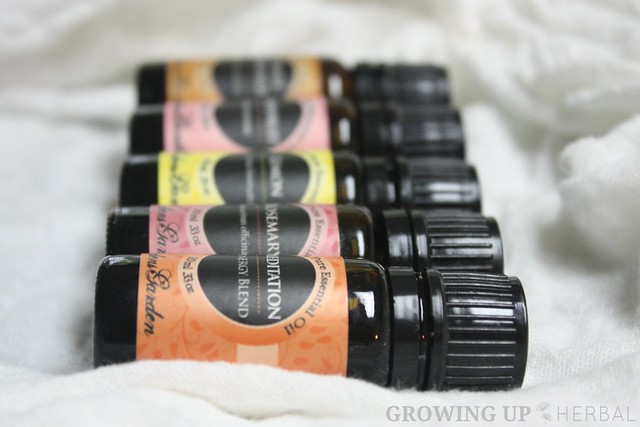
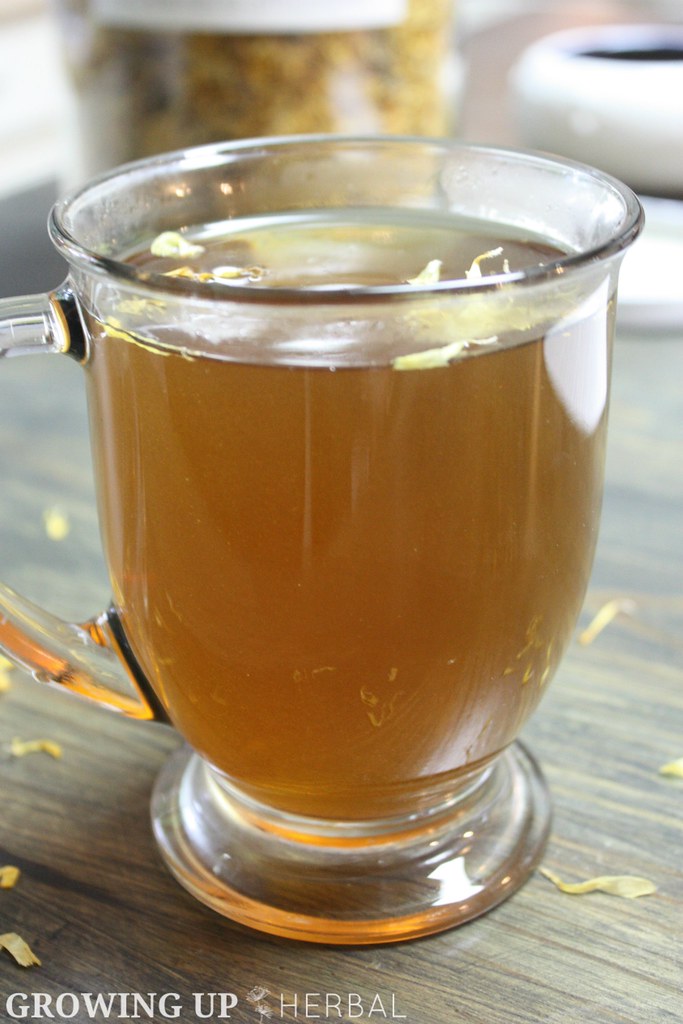

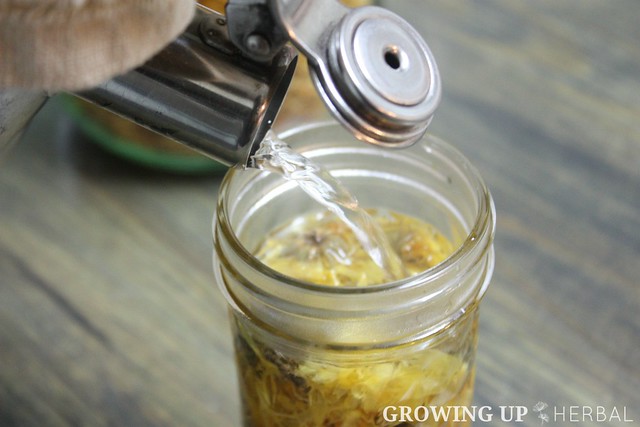
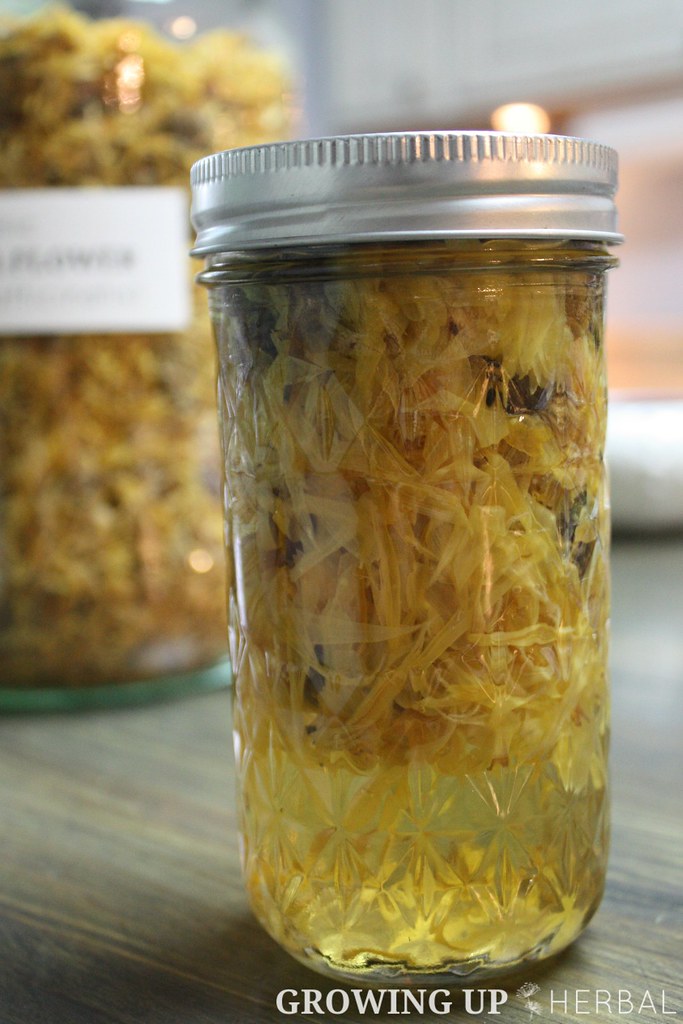
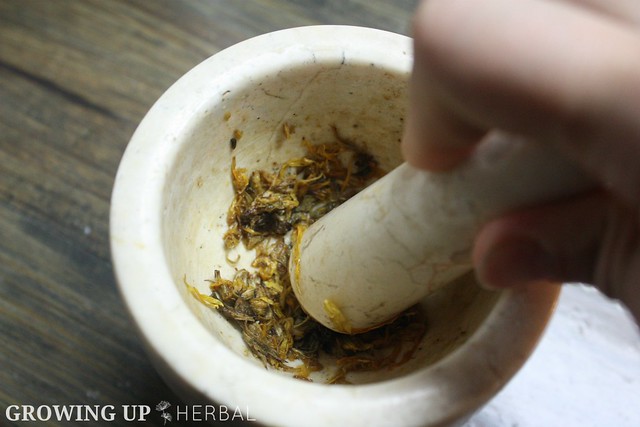

Thanks for all the info!! Such great uses and glad that’s it’s very useful for baby care 🙂 I’m going to save this and go to it when something comes up in my family.
You’re very welcome Jalice!
Thank you so much for the immensely helpful information you’ve given in this post and others on calendula. What an ongoing blessing this is to me. Again, thank you.
You’re so welcome Angelique! Thanks for your comment!
Meagan, Is there anyway we can canned Calendula infusion for emergency? Just thinking… Maybe process in boiling bath water for at least 10-15 minutes. What about the ultimate elderberry syrup? Just wondering…what do you think?